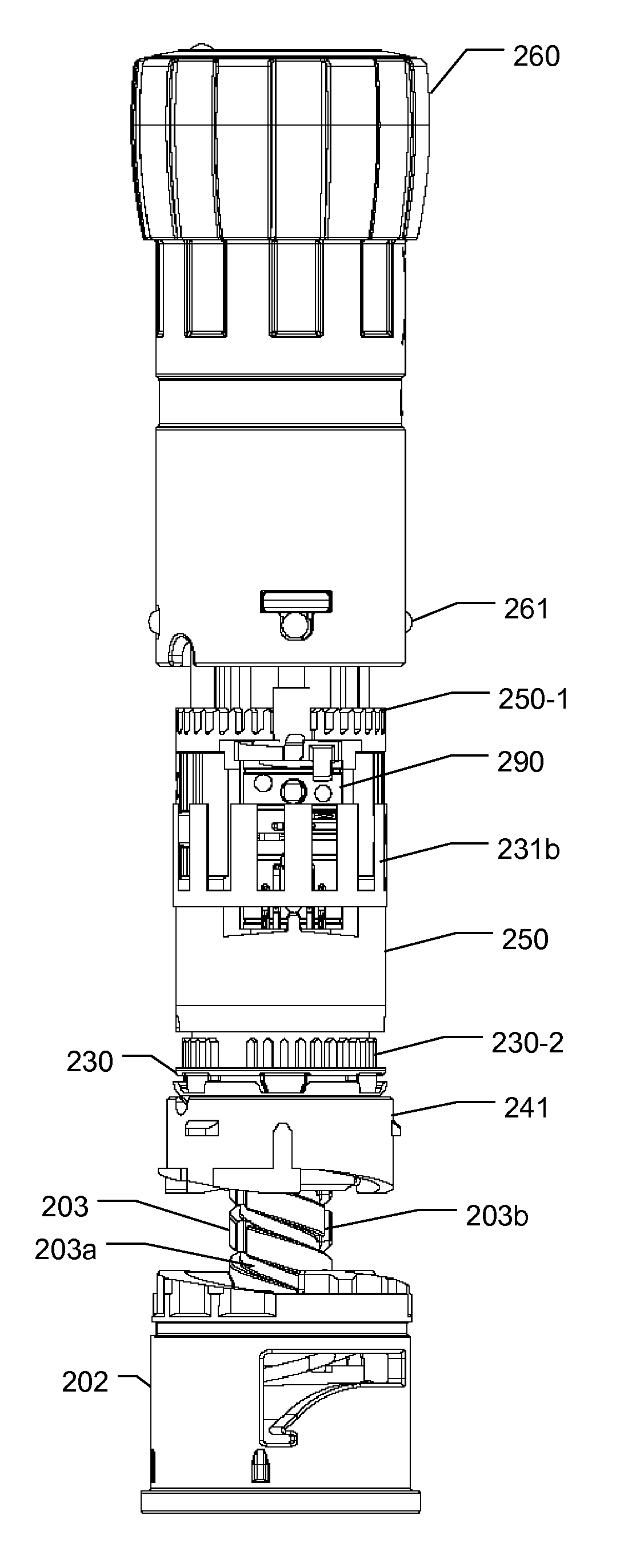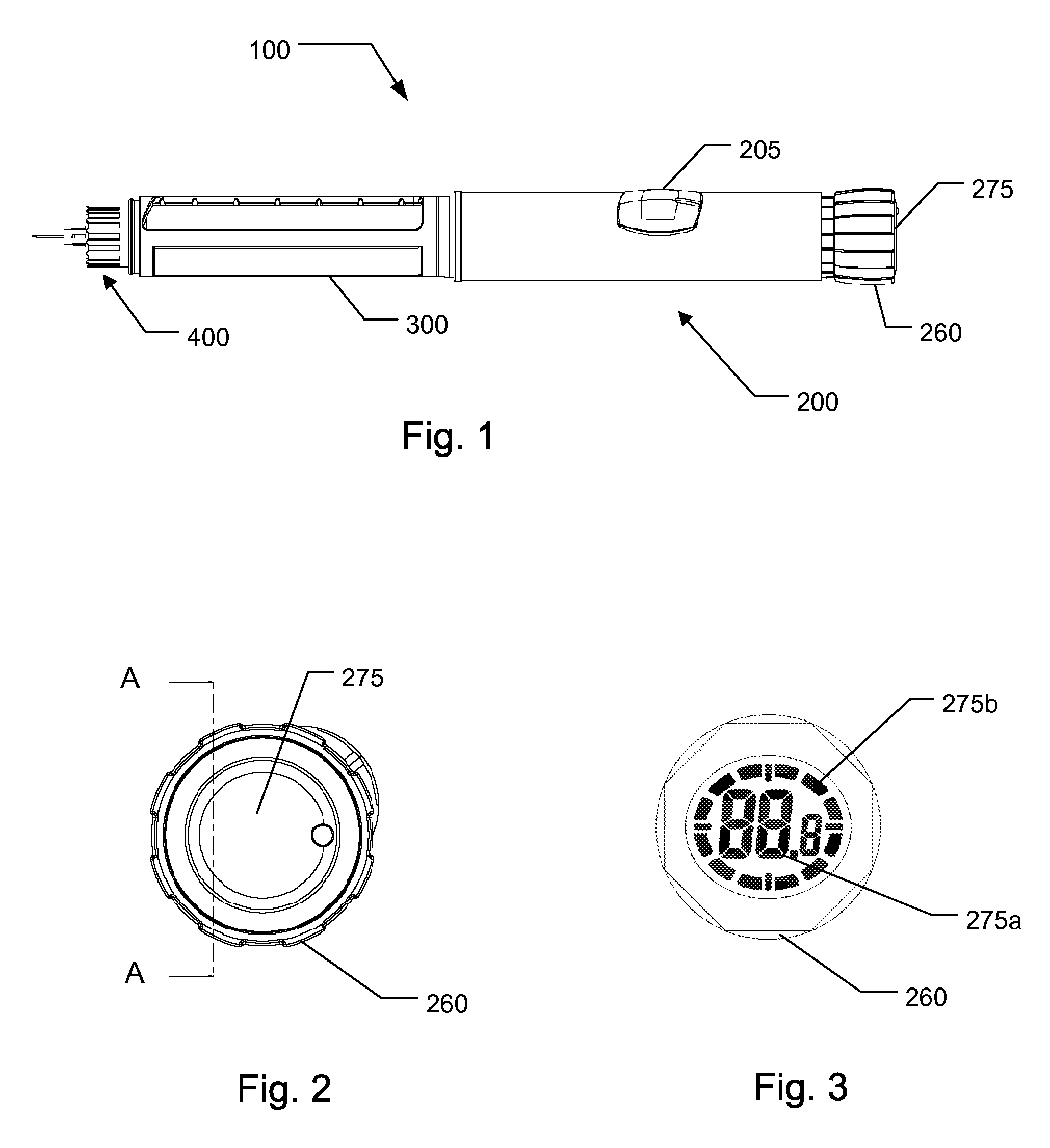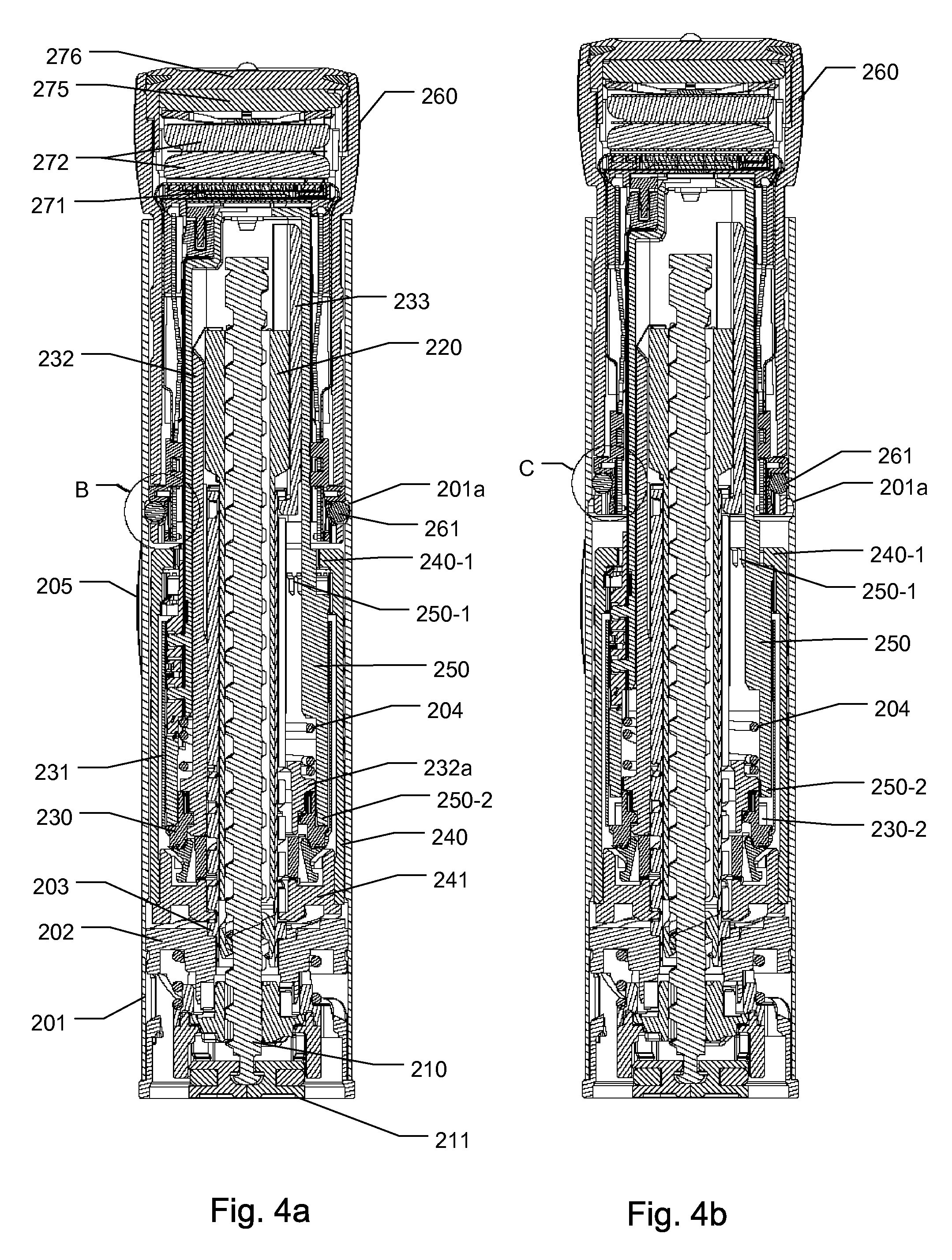Electronically assisted drug delivery device
a technology of electronic assisted drug delivery and electronic assisted technology, applied in the direction of intravenous devices, other medical devices, infusion syringes, etc., can solve the problems of incurring unnecessary discomfort, being somewhat imprecise or unreliable, and purely mechanical working injection devices that do not provide the possibility of storing information related to previously injected doses for later retrieval, etc., to achieve superior performance and reduce costs.
- Summary
- Abstract
- Description
- Claims
- Application Information
AI Technical Summary
Benefits of technology
Problems solved by technology
Method used
Image
Examples
example
[0143]The sensor is at Gray code position 1, so switch 3 is closed (0) and switches 1, 2 and 4 are open (1). The pull-up on switch 3 is turned off and 1, 2 and 4 are on. The processor goes into standby mode.
[0144]The sensor now changes to position 2. This means that switch 2 closes, so the input changes state to 0, waking up the processor. All pull-ups are then turned on and the inputs are read. Now the pull-ups on inputs 2 and 3 are turned off and the processor goes back into standby mode.
[0145]The sensor now changes to position 3. This means that switch 3 is turned off, but since the pull-up is disabled (or is pulled down) a transition of the input will not be detected. The processor will stay in standby mode and never detect the transition.
[0146](end of example).
[0147]This scheme effectively implements a true zero-power sensor, but it lacks the ability to detect all the sensor transitions. A way of reducing this problem is to implement a more intelligent control of the pull-up re...
PUM
 Login to View More
Login to View More Abstract
Description
Claims
Application Information
 Login to View More
Login to View More - R&D
- Intellectual Property
- Life Sciences
- Materials
- Tech Scout
- Unparalleled Data Quality
- Higher Quality Content
- 60% Fewer Hallucinations
Browse by: Latest US Patents, China's latest patents, Technical Efficacy Thesaurus, Application Domain, Technology Topic, Popular Technical Reports.
© 2025 PatSnap. All rights reserved.Legal|Privacy policy|Modern Slavery Act Transparency Statement|Sitemap|About US| Contact US: help@patsnap.com



